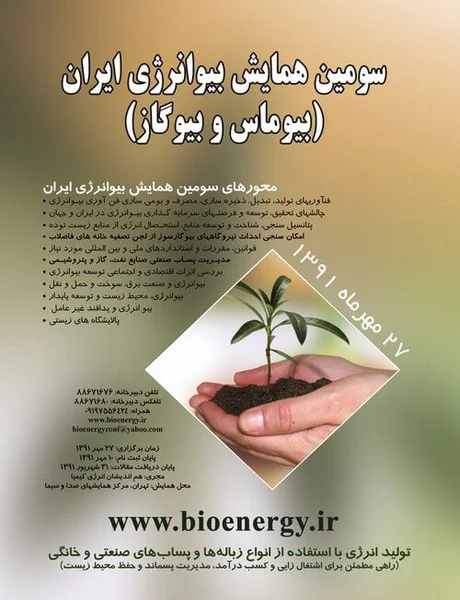-
lead biosorption from aqueous solution by filamentous fungus mucor indicus
جزئیات بیشتر مقاله- تاریخ ارائه: 1391/07/06
- تاریخ انتشار در تی پی بین: 1391/07/06
- تعداد بازدید: 456
- تعداد پرسش و پاسخ ها: 0
- شماره تماس دبیرخانه رویداد: -
the biomass of mucor indicus was used for removal of lead ions from aqueous solution. the biomass was used as both untreated and treated form. both types were successful in removal of lead ions. the treatment was performed using 0.5 m sodium hydroxide added to the fungi in an autoclave. the biomass was dried before biosorption experiments. the effect of drying temperature on biosorption capacity was investigated by drying the untreated biomass at different temperatures of ambient, 0 ºc, and 50 ºc. the best drying temperature in which the biosorption capacity was the highest was 50ºc. the effect of ph in the range of 3.0-5.0 was studied. biosorption of untreated biomass was independent of ph while for treated biomass, the adsorption capacity increased by increasing the ph. at low ph, biosorption capacity of untreated biomass is higher than that of treated one while at higher ph, the biosorption capacity of treated biomass is higher. the kinetic of biosorption was also investigated. the time to reach the equilibrium for untreated biomass is less than that for treated one. in order to describe kinetic data, pseudo-first order, pseudo-second order, intra-particle diffusion, and elovich models were used. ho’s pseudo-second order model was the best one for fitting the kinetic data.
مقالات جدیدترین رویدادها
-
استفاده از تحلیل اهمیت-عملکرد در ارائه الگوی مدیریت خلاقیت سازمانی و ارائه راهکار جهت بهبود
-
بررسی تاثیر ارزش وجوه نقد مازاد بر ساختار سرمایه شرکت های پذیرفته شده در بورس اوراق بهادار تهران
-
بررسی تأثیر سطح افشای ریسک بر قرارداد بدهی شرکت های پذیرفته شده در بورس اوراق بهادار تهران
-
بررسی تأثیر رتبه بندی اعتباری مبتنی بر مدل امتیاز بازار نوظهور بر نقد شوندگی سهام با تأکید بر خصوصی سازی شرکت ها
-
تأثیر آمیخته بازاریابی پوشاک ایرانی بر تصویر ذهنی مشتری پوشاک ایرانی (هاکوپیان)
-
آنالیز عدم قطعیت شیروانی های نامحدود به روش شبیه سازی مونت کارلو با در نظرگیری متغیرهای تصادفی چندگانه و همبسته
-
بررسی الگوی جریان پایین دست سازه های کنترل شیب با و بدون نشت روبه بالا با استفاده از مدل عددی
-
اپیدمیولوژی مالاریا در استان اردبیل، 79-1378
-
مقایسه نتایج شبکه عصبی مصنوعی و مدل های تجربی توزیع مکانی مثلثاتی، افزایش سطح، کاهش سطح و کاهش سطح اصلاح شده در تخمین رسوبگذاری تزارهای مختلف مخزن سد کرج
-
بررسی بیان ژن گیرنده های پروژسترون در نواحی مختلف رحم در اوایل آبستنی گوسفند افشاری
مقالات جدیدترین ژورنال ها
-
مدیریت و بررسی افسردگی دانش آموزان دختر مقطع متوسطه دوم در دروان کرونا در شهرستان دزفول
-
مدیریت و بررسی خرد سیاسی در اندیشه ی فردوسی در ادب ایران
-
واکاوی و مدیریت توصیفی قلمدان(جاکلیدی)ضریح در موزه آستان قدس رضوی
-
بررسی تاثیر خلاقیت، دانش و انگیزه کارکنان بر پیشنهادات نوآورانه کارکنان ( مورد مطالعه: هتل های 3 و 4 ستاره استان کرمان)
-
بررسی تاثیر کیفیت سیستم های اطلاعاتی بر تصمیم گیری موفق در شرکتهای تولیدی استان اصفهان (مورد مطالعه: مدیران شرکتهای تولیدی استان اصفهان)
-
نقش راهبردهای مقابله اسلامی در پیش بینی آمادگی به اعتیاد در دانشجویان دختر
-
سیاست های قانونی فناوری اطلاعات و ارتباطات درتوسعه آموزش و دانش در نظام آموزشی کشور
-
شرح و نقد رای وحدت رویه 652 دیوان عالی کشور مصوب 1380/1/28 با موضوع لغو معافیت دولت از پرداخت هزینه دادرسی
-
بررسی علل ارتکاب جرایم سازمان یافته شبکه ای توسط مجرمین یقه سفید
-
road pricing effect on the emission of traffic pollutants, a case study in tehran




سوال خود را در مورد این مقاله مطرح نمایید :